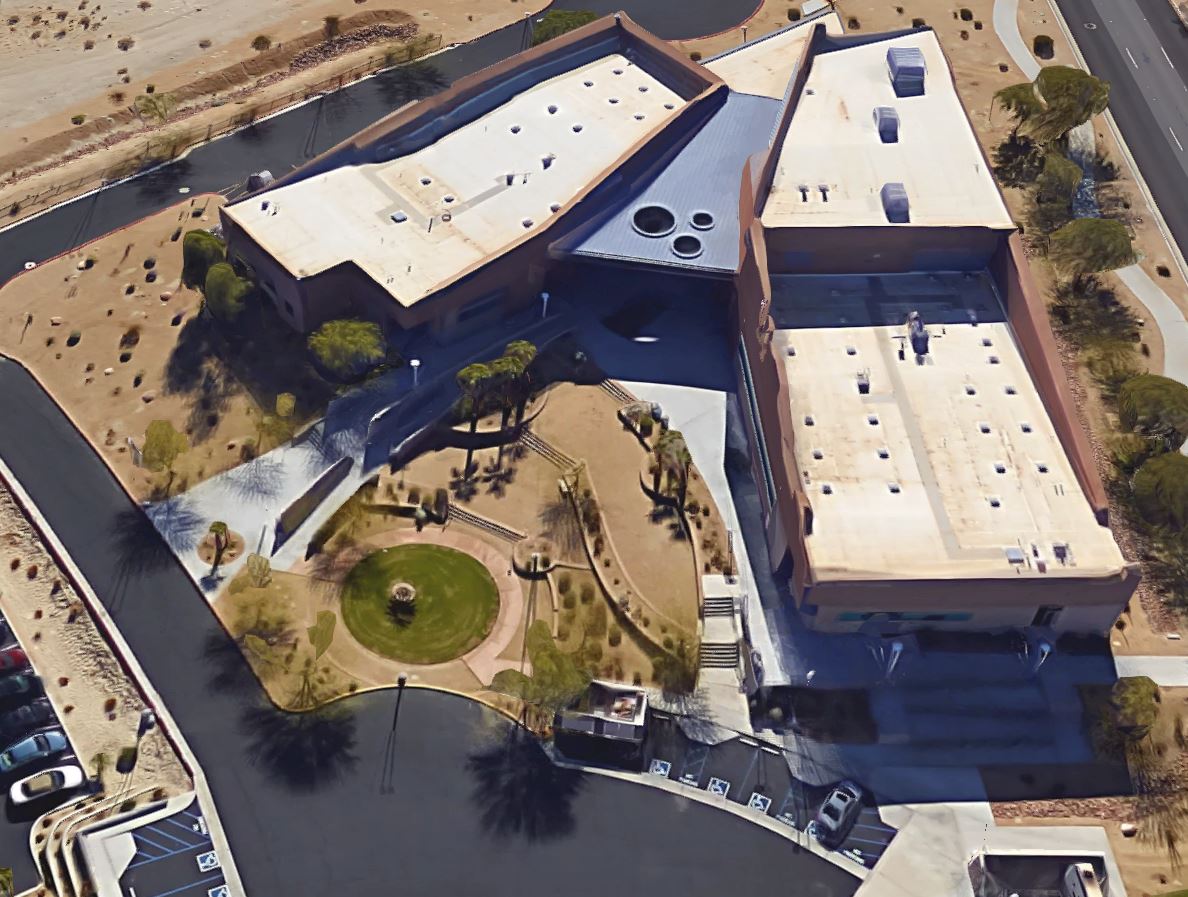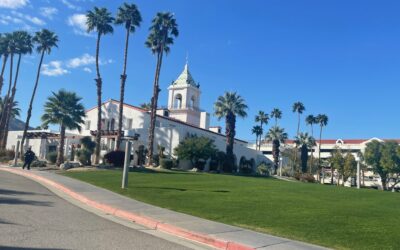If you think running a higher educational institution is difficult, try doing it in a pandemic. But according to the Valley’s top educators who spoke at the 2021 Destination Talent Coachella Valley webinar (held on January 25), the challenges of adapting to remote learning during COVID and a “down” economy are eclipsed by giving area students the opportunity to succeed and delivering a top-quality workforce for businesses to thrive. And with the help of a community that’s supportive of education.
Moderated by Sheila Thornton, CEO of OneFuture (a nonprofit that helps low-income students become part of a high-quality workforce and strong regional economy) and Greater Coachella Valley Chamber of Commerce Vice President, Director of Public Policy Diana Soto, the guest panel featured Dr. Joel Kinnamon, President, College of the Desert (COD); Dr. Jake Zhu, Dean, California State University San Bernardino, Palm Desert Campus; Dr. Tomás Morales, President, California State University San Bernardino; and Dr. Kim Wilcox, Chancellor, University of California Riverside.
All the institutions represented have substantial campuses in Palm Desert (although they may have others elsewhere). Among the insights derived from the webinar is the interdependence of area institutions, right down to CSUSB and UCR sharing a master planned campus in Palm Desert. Dr. Morales noted that “more than 50 percent of our incoming students come from the College of the Desert and other community colleges in the region.” Finding ways to partner with each other is important, according to Dr. Wilcox. “It doesn’t make sense for both of us [speaking to Dr. Morales] to teach introductory math for interest rate chemistry side by side in Palm Desert,” he said. “First of all, your tuition is lower than mine – it makes much more sense for you to take the lead on the undergraduate instruction in the valley.”
Thornton also touched the valley’s remarkable interconnectivity: “We began back in 2005 to get students opportunities all across the pipeline. Not just about their educational opportunity, but community support – the kind of financial support that they need, the social support that they need, and then to get connected to employers in the region.” While acknowledging that “students who are geographically isolated, and economically, significantly, economically-disadvantaged in the first generation have a harder time finishing high school, post-secondary work, and college degrees,” she said that “the 71,000 students in the valley’s K-12 districts are “our future workforce, our future leaders, educators, businesspeople and entrepreneurs.”
Elephant in the Room
It was at this point that Thornton admitted the elephant into the room. “We want to talk about the COVID impact,” she said. “What’s possible for our future, how do we address these immediate issues around the COVID crisis?”
Seen through the prism of COVID-19, here’s what the educators had to say about education during and after the pandemic:
On Remote Learning. “For those who are deep into university life,” said Dr. Wilcox, “over the last 10 or 20 years, we’ve slowly put more and more things online. There are very few classes that don’t have some online component.” In the future, Wilcox thinks that institutions will be much more technically sophisticated than now. But, he added, “when I meet with students (via Zoom, regularly), they all want to get back to campus. So, to envision a world where most everything is remote, I think is not going to happen. We’re humans, at the end of the day, we want to get back to campus.”
On the Economic Downturn: Dr Kinnamon noted that “our community college students are vulnerable to being knocked off the track of their academic goals. And if they lose their jobs, they don’t have access to transportation or can suffer from food or housing insecurity. Now, with the pandemic, we can also add access to technology, and adequate Wi-Fi resources to the list.” Even before COVID, analysts estimate that there is a 30% divide between urban and rural areas in the Valley. “We’ve long known that residents of the eastern part of Coachella Valley rely on public libraries and fast food restaurants for Wi-Fi access. In short, “COVID-19 has really magnified the digital gap for our students.” COD’s answer was to loan Chromebooks, hotspots, and webcams to students, and for faculty and staff to also receive those items. “We’ve added a new laptop plan that provides payment options, and access to affordable computers.”
On the Return of In-person Classes: According to Dr. Zhu, “We’re down right now, for the first time in the eight years that I’ve been president at Cal State San Bernardino. Our total applicant pool is down 17 percent and our transfer application pool is down 10 percent. I agree with Kim Wilcox, there’s no question that folks want to come back on campus, but the reality is that we’re making significant investments in faculty professional development, exploring alternative modalities in every single classroom, on both the Palm Desert and San Bernardino campuses. I know that the chancellor and the leadership of the CSU are in conversations directly with the governor regarding vaccination; there’ve been a lot of interesting articles on the post-pandemic University and what that will look like. So, there are a lot of unknowns. My cabinet meets almost on a daily basis to prepare for both for the summer and for the fall.”
Is Higher Ed Financially Attainable for Area Students?
Asked by Soto specifically about tuition options available to students, the educators responded as follows:
Dr. Kinnamon noted that COD has a free tuition program that’s been in place since 2016, which “pledges free tuition fees for all local high school graduates. This semester, we added a program called PLEDGE that offers the same free tuition to our former students who did not complete their degrees. And so, we’re trying to look at different programs that move people along their pathway, identify niches and target those, and target our foreign students.”
For Cal State San Bernardino, Dr. Morales said “About 50 percent of our operating budget comes from tuition and fees. Having said that, more than 60 percent of our students who have zero parental contribution attend Cal State San Bernardino without having to take out any loans or having to take money out of their family resources. So, a very significant percentage of undergraduates actually are able to go to school with full financial aid.”
In addition, Dr. Zhu admitted that for CSU SB’s minority students, the value proposition may have changed. “Youth education, higher education, and higher degrees used to be their priority.” Now, “students may not have changed, but their priority may have changed. Now in this pandemic, temporarily, they shift their mindset to earning money to support family and survive the social isolation [of COVID].”
For any campus in the University of California system, said Dr. Wilcox, “If you come from a family whose income is $80,000 or less, we will cover all of your tuition and fees, either from Pell Grants, Cal Grants, or our own institutional funds.”
In order to provide financial opportunities to students, educators spend a great deal of their time fundraising. COVID has affected those efforts by making both harder and more vital to fundraise, Said Dr. Kinnamon, “The College of the Desert Foundation stepped up to help our struggling students by raising more than $250,000 for the student emergency fund, which aids our students with unexpected financial hardships that would likely prevent them from coming to the college.” Dr. Morales complimented the Coachella Valley community as being unbelievably supportive. “We continue to raise dollars philanthropically through our foundations to help students continue their education.”
In Conclusion, One Audacious Goal
To bring the webinar to an aspirational conclusion, Thornton suggested the educators state a “big, audacious goal so that more students are ready to get into the job market and get economically mobile.” As an example, she offered one for OneFuture: “we’ve set a goal of 70 percent of students finishing some degree or certificate in a period of six years.”
Thus enjoined, the educators made the following pronouncements:
Dr. Morales mentioned a program to help migrants and migrant families get “a college degree or complete high school. We’re really very proud that PDC has produced several 1,000 graduates since the late 1980s. We’re continuing to do so to support the economy, economic growth of this region.”
Dr Zhu: “We have to continue to work together, continue not only to work with community college partners, and certainly UCR, but also with the chamber and OneFuture. There are nonprofit organizations that play such an important role, and it just requires us to continue to communicate, continue to have programs like this one, and continue to figure out how best to support each other to support the Coachella Valley Community.”
Dr. Kinnamon: “We’ve partnered with UCR recently for California Indian Nations College, which offers courses incorporating indigenous culture, native language revitalization and traditional Native American values. That’s something unique to this valley and exciting. It started with $3 million of seed money provided by the 29 Palms Band of Mission Indians. Classes are accredited through College of the Desert.”
Dr. Wilcox: “I think we need to celebrate what we have. We do have a history of partnering, partnering, that is the envy of many. So, I offer two comments on what we can do in the future. One, celebrate our strengths and our individuality. And then, be really deliberate and smart about our connections. Remember, a great collaboration is only as good as its collaborators.”




